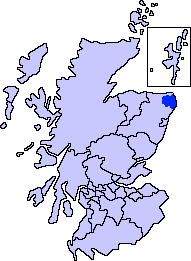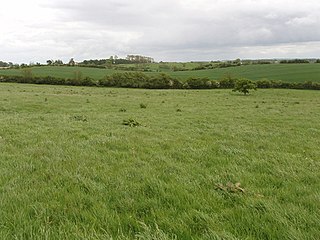See also
| Legislation and policy | |
|---|---|
| Applications and Appeals | |
| Institutions | |
| Local development framework | |
| | This article relating to Town and country planning in the United Kingdom is a stub. You can help Wikipedia by expanding it. |
The Grampian condition is a facet of planning Scottish case law established by Grampian Regional Council v City of Aberdeen District Council (1984) 47 P&CR 633. The term is commonly also used in England and Wales.
A "Grampian condition" is a planning condition attached to a decision notice that prevents the start of a development until off-site works have been completed on land not controlled by the applicant.

Perth and Kinross is one of the 32 council areas of Scotland and a Lieutenancy Area. It borders onto the Aberdeenshire, Angus, Argyll and Bute, Clackmannanshire, Dundee, Fife, Highland and Stirling council areas. Perth is the administrative centre. With the exception of a large area of south-western Perthshire, the council area mostly corresponds to the historic counties of Perthshire and Kinross-shire.

Planning permission in the United Kingdom is the planning permission required in the United Kingdom in order to be allowed to build on land, or change the use of land or buildings. Within the UK the occupier of any land or building will need title to that land or building, but will also need "planning title" or planning permission. Planning title was granted for all pre-existing uses and buildings by the Town and Country Planning Act 1947, which came into effect on 1 July 1948. Since that date any new "development" has required planning permission. "Development" as defined by law consists of any building, engineering or mining operation, or the making of a material change of use in any land or building. Certain types of operation such as routine maintenance of an existing building are specifically excluded from the definition of development. Specified categories of minor or insignificant development are granted an automatic planning permission by law, and therefore do not require any application for planning permission. These categories are referred to as permitted development.

Grampian Television was the original name of the Channel 3 service for the north of Scotland founded in 1961 and now named STV. The northern region's coverage area includes the Northern Isles, Western Isles, Highlands Grampian, Tayside, and parts of north Fife.

The Right Honourable the Lord Lyon King of Arms, the head of Lyon Court, is the most junior of the Great Officers of State in Scotland and is the Scottish official with responsibility for regulating heraldry in that country, issuing new grants of arms, and serving as the judge of the Court of the Lord Lyon, the oldest heraldic court in the world that is still in daily operation.

Buchan is an area of north-east Scotland, historically one of the original provinces of the Kingdom of Alba. It is now one of the six committee areas and administrative areas of Aberdeenshire Council, Scotland. These areas were created by the council in 1996, when the Aberdeenshire council area was created under the Local Government etc (Scotland) Act 1994. The council area was formed by merging three districts of the Grampian Region: Banff and Buchan, Gordon and Kincardine and Deeside. The committee area of Buchan was formed from part of the former district of Banff and Buchan.

Grampian was one of nine former local government regions of Scotland created in 1975 by the Local Government (Scotland) Act 1973 and abolished in 1996 by the Local Government etc. (Scotland) Act 1994. It is now divided into the unitary council areas of:

Moray or Morayshire, called Elginshire until 1919, is a historic county, registration county and lieutenancy area of Scotland, bordering Nairnshire to the west, Inverness-shire to the south, and Banffshire to the east. It was a local government county, with Elgin the county town, until 1975. The county was officially called Elginshire, sharing the name of the Elginshire parliamentary constituency, so named since 1708.

The Shire of Northern Grampians is a local government area in the Wimmera region of Victoria, Australia, located in the western part of the state. It covers an area of 5,730 square kilometres (2,210 sq mi) and in June 2018 had a population of 11,431, having fallen from 12,087 in 2008. It includes the towns of Stawell, St Arnaud, Great Western, Marnoo, Glenorchy, Stuart Mill, Navarre and the tourist town of Halls Gap. It was formed in 1995 from the amalgamation of the City of Stawell, Town of St Arnaud, Shire of Stawell, Shire of Kara Kara and parts of the Shire of Wimmera, Shire of Dunmunkle and Shire of Donald.

Banff and Buchan is a committee area of the Aberdeenshire Council, Scotland. It has a population of 35,742. Fishing and agriculture are important industries, together with associated processing and service activity.
Local nature reserve (LNR) is a designation for nature reserves in Great Britain. The designation has its origin in the recommendations of the Wild Life Conservation Special Committee which established the framework for nature conservation in the United Kingdom and suggested a national suite of protected areas comprising national nature reserves, conservation areas, national parks, geological monuments, local nature reserves and local educational nature reserves.
Town and country planning in the United Kingdom is the part of English land law which concerns land use planning. Its goal is to ensure sustainable economic development and a better environment. Each country of the United Kingdom has its own planning system that is responsible for town and country planning, which outside of England is devolved to the Northern Ireland Assembly, the Scottish Parliament and the Senedd.

The Town and Country Planning Act 1990 is an act of the United Kingdom Parliament regulating the development of land in England and Wales. It is a central part of English land law in that it concerns town and country planning in the United Kingdom. Repealed in parts by the Planning and Compensation Act 1991, it is now also complemented by the Planning and Compulsory Purchase Act 2004.
The Town and Country Planning Act 1947 was an Act of Parliament in the United Kingdom passed by the Labour government led by Clement Attlee. It came into effect on 1 July 1948, and along with the Town and Country Planning (Scotland) Act 1947 was the foundation of modern town and country planning in the United Kingdom.
A local planning authority (LPA) is the local government body that is empowered by law to exercise urban planning functions for a particular area. They exist in the United Kingdom and India.
A tree preservation order (TPO) is a part of town and country planning in the United Kingdom. A TPO is made by a local planning authority to protect specific trees or a particular area, group or woodland from deliberate damage and destruction if those trees are important for the amenity of the area. In Scotland TPOs can also be used to protect trees of historic or cultural significance. TPOs make the felling, lopping, topping, uprooting or otherwise willful damaging of trees without the permission of the local planning authority a legal offence, although different TPOs have different degrees of protection.
The Town and Country Planning (Scotland) Act 1997 is the principal piece of legislation governing the use and development of land within Scotland. The act's forerunner was the Town and Country Planning (Scotland) Act of 1972.
Planning gains are ways that local authorities in the United Kingdom can secure additional public benefits from developers, during the granting of planning permission.

Regional elections were held in Scotland on Thursday 8 May 1986, under the terms of the Local Government (Scotland) Act 1973. The previous elections had been held in 1982. The elections took place a year before the Conservative's third general election victory. Elections took place in England and Wales on the same day.

Fawcett Properties Ltd v Buckingham County Council [1960] has become a leading case in planning law and concerned agricultural conditions of use. It is also relevant for its tests on finding certainty versus uncertainty of policy, contract or other concepts rendering them void. It has been applied in English trusts law which has long held a cy-près doctrine, expressed in pre 1649-Law French meaning "there nearly" that is perfecting concepts or a purpose for funds which is tantamount to a legitimate interest or concern and intended to take clear effect.

Public housing provided the majority of rented accommodation in the United Kingdom until 2011 when the number of households in private rental housing surpassed the number in social housing. Houses and flats built for public or social housing use are built by or for local authorities and known as council houses, though since the 1980s the role of non-profit housing associations became more important and subsequently the term "social housing" became more widely used, as technically council housing only refers to housing owned by a local authority, though the terms are largely used interchangeably. Before 1865, housing for the poor was provided solely by the private sector. Council houses were built on council estates, where other amenities, like schools and shops, were often also provided. From the 1950s, blocks of flats and three-or-four-storey blocks of maisonettes were widely built, alongside large developments of terraced housing, while the 1960s and the 1970s saw construction of many high-rise tower blocks. Flats and houses were also built in mixed estates.